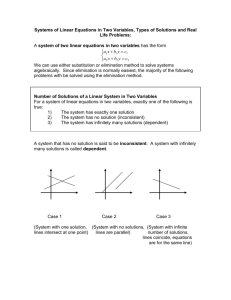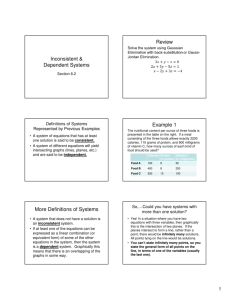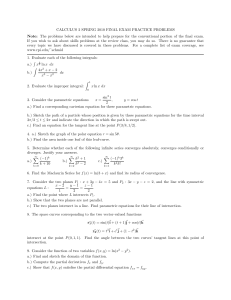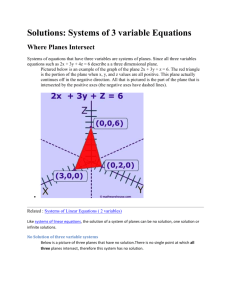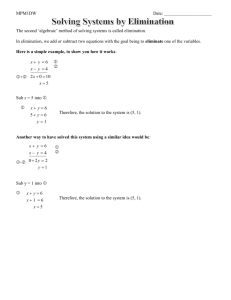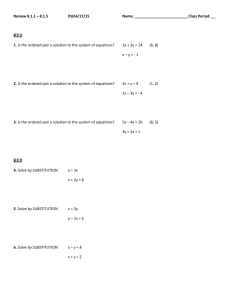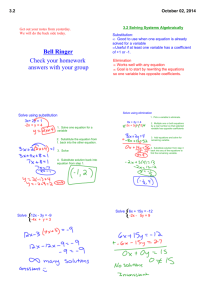Inconsistent & Dependent Systems
advertisement
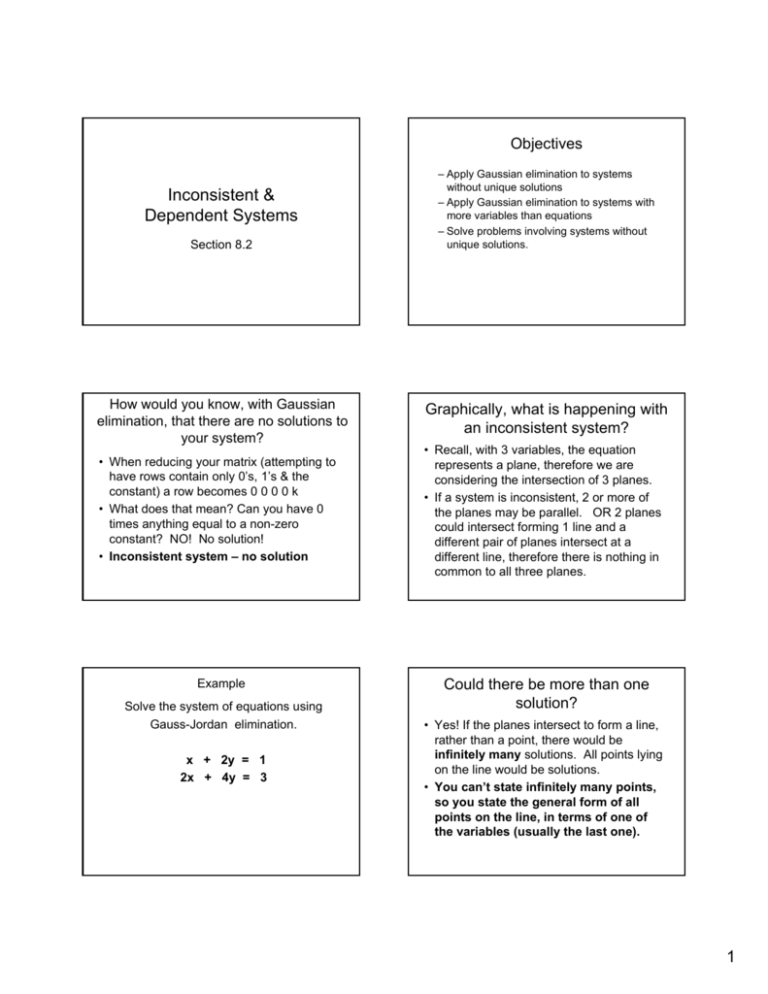
Objectives Inconsistent & Dependent Systems Section 8.2 How would you know, with Gaussian elimination, that there are no solutions to your system? • When reducing your matrix (attempting to have rows contain only 0’s, 1’s & the constant) a row becomes 0 0 0 0 k • What does that mean? Can you have 0 times anything equal to a non-zero constant? NO! No solution! • Inconsistent system – no solution Example Solve the system of equations using Gauss-Jordan elimination. x + 2y = 1 2x + 4y = 3 – Apply Gaussian elimination to systems without unique solutions – Apply Gaussian elimination to systems with more variables than equations – Solve problems involving systems without unique solutions. Graphically, what is happening with an inconsistent system? • Recall, with 3 variables, the equation represents a plane, therefore we are considering the intersection of 3 planes. • If a system is inconsistent, 2 or more of the planes may be parallel. OR 2 planes could intersect forming 1 line and a different pair of planes intersect at a different line, therefore there is nothing in common to all three planes. Could there be more than one solution? • Yes! If the planes intersect to form a line, rather than a point, there would be infinitely many solutions. All points lying on the line would be solutions. • You can’t state infinitely many points, so you state the general form of all points on the line, in terms of one of the variables (usually the last one). 1 What if your system has 3 variables but only 2 equations? Dependent system • Graphically, this is the intersection of 2 planes. • 2 planes cannot intersect in 1 point, rather they intersect in 1 line. (or are parallel, thus no solution) • The solution is all points on that line. • The ordered triple is represented as one of the variables (usually z) and the other 2 as functions of that variable: ex: (z+2, 3z, z) • Notice when there were infinitely many solutions, two variables were stated in terms of the third variable. In other words, the x & y values are dependent on the value selected for z. • If there are infinitely many solutions, the system is considered to be dependent. Example Review of Special Systems Solve the system of equations using Gauss-Jordan elimination. 5x - 11y + 6z = 12 - x + 3y - 2z = - 4 3x - 5y + 2z = 4 Review of Special Systems • When we obtain a row whose only nonzero entry occurs in the last column, we have an inconsistent system of equations. For example, in the matrix ⎡1 0 4 −6 ⎤ ⎢0 1 4 8 ⎥ ⎢ ⎥ ⎢⎣0 0 0 9 ⎥⎦ • When a row consists entirely of 0’s, the equations are dependent and the system is equivalent. ⎡ 1 0 4 −6 ⎤ ⎢0 1 4 8 ⎥ ⎢ ⎥ ⎢⎣ 0 0 0 0 ⎥⎦ Example Solve the system of equations using Gauss-Jordan elimination. 2x - 4y + z = 3 x - 3y + z = 5 3x - 7y + 2z = 12 the last row corresponds to the false equation 0 = 9, so we know the original system has no solution. 2 Example Solve the system of equations using Gauss-Jordan elimination. x + y - 10z = - 4 x - 7z = - 5 3x + 5y - 36z = -10 3
